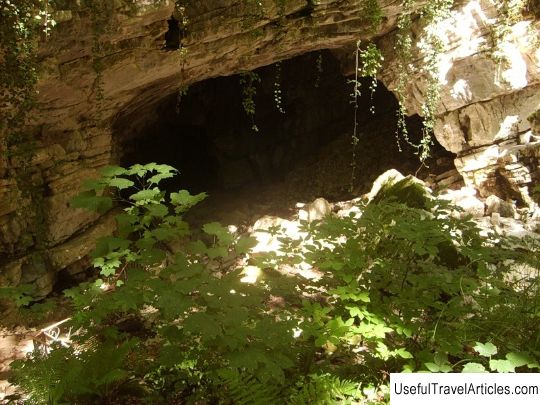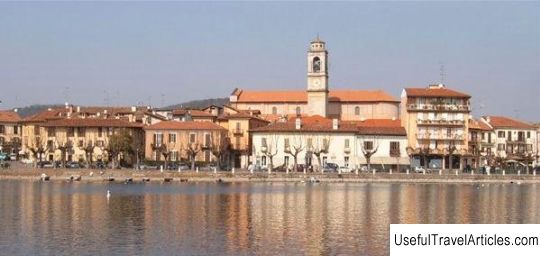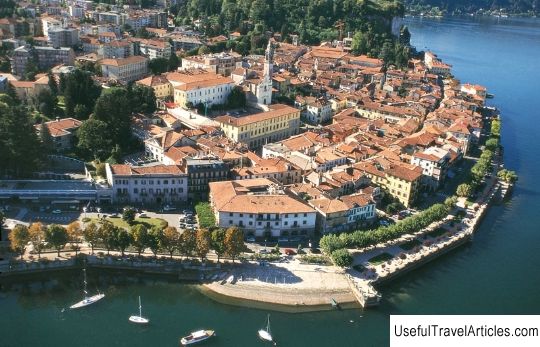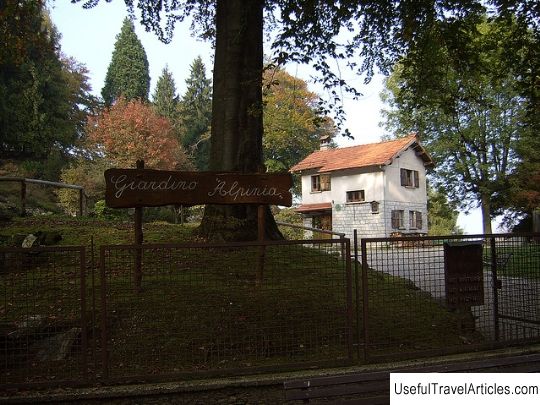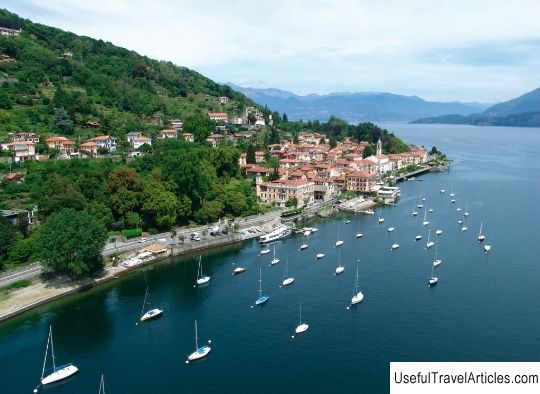Baveno description and photos - Italy: Lake Maggiore
Rating: 7,5/10 (100 votes) 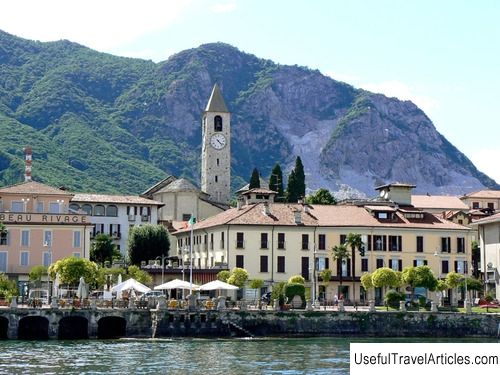
Baveno description and photos - Italy: Lake Maggiore. Detailed information about the attraction. Description, photographs and a map showing the nearest significant objects. The name in English is Baveno. Photo and descriptionBaveno is a lovely picturesque town nestled on the western shore of Lake Lago Maggiore, 13 miles northwest of Arona. Despite the fact that Baveno is considered an ancient city, no reliable evidence has been found for this. Most likely, the first inhabitants of these places were the descendants of the Celtic tribes. Traces of Roman culture have been found here since the 1st century BC. And in the first decades of the 8th century, Baveno began to flourish economically, which successfully grew and developed thanks to the trade in wine, timber and coal. At the beginning of the 19th century, by order of Napoleon, a road was built through the Simplon Pass in the Alps, which led to the appearance of the first tourists in the city, and with them the construction of hotels and other infrastructure. Since then, Baveno has been visited by Byron, the Russian Empress Alexandra Feodorovna, British Queen Victoria, Wagner, Churchill and many other celebrities. Today Baveno is a very popular thermal resort. Among its attractions is the parish church of San Gervasio and San Protaso from the 12th to 13th centuries with a Romanesque bell tower and an octagonal baptistery. Just outside the city, at the foot of Monte Camosho, there is the world-famous red granite cave with the Fonti di Baveno mineral springs. But above all, Baveno is famous for its luxurious aristocratic villas. One of the most original on the entire coast of Lago Maggiore is Villa Henfrey-Branca, built between 1870 and 1872 by the English engineer Charles Henfrey. Its red brick facade, turrets and spiers, marble verandas and a beautiful English garden make it look like a magical castle that attracts the attention of anyone walking along the Baveno promenade. On the territory of the villa there is a small Protestant church and a small fortress, built in 1882-83. It was at Villa Henfrey-Branca that Queen Victoria of Great Britain stayed with her daughter. And today, the descendants of European royal dynasties pamper this property of the Branca family, who bought the villa after the death of Charles Henfrey. Villa Fedora, set in a vast garden far from the city center, is an elegant residence from the first half of the 19th century that today houses the Chamber of Commerce of the Province of Verbano-Cusio-Ossola. The villa got its name from the famous opera "Fedora" by the composer Umberto Giordano, who lived here for 20 years. Built in the early 20th century, Villa Barberis stands out not only for its dazzling white facade, but also for its very exotic look. It was built for Alberto Berberis, a traveler who lived in the East for many years. The style of this villa is reminiscent of the atmosphere of the "Thousand and One Nights", which is especially emphasized by the minaret in the garden and tropical plant species. Villa Durazzo, built in the 19th century for the Marquis of Durazzo of Genoa, directly opposite the Gulf of Borromean, has now been converted into the Lido Palace Hotel. It was there that Winston Churchill stayed on his honeymoon in 1908. One of the oldest villas in Baveno is Villa Brandolini d'Adda - it was built in the 16th century on the site of a former monastery. The surrounding garden is divided into four sections - Italian, English, French and Japanese. Finally, it is worth exploring the Villa Carioso, designed by the famous architect Giuseppe Sommaruga, Villa Claudia and Villa Provena di Collegno Galtrucco, which hosted various political meetings in the late 19th century.              We also recommend reading Rococo Church (Rokokokirche Pfarrkirchen) description and photos - Austria: Bad Hall Topic: Baveno description and photos - Italy: Lake Maggiore. |
